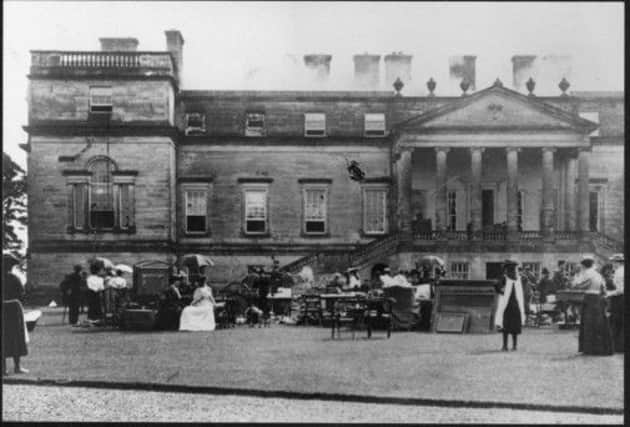Penicuik House to become major Scottish attraction


Now the painstakingly restored mansion house is set to become the nation’s newest visitor attraction - after a campaign stretching over three decades and a £7.4 million transformation.
Penicuik House, in Midlothian, dates back to the 1760s and is revered in architectural and conservation circles because of its Italian “Palladian” design, said to be among the best of its kind in scotland, and its setting at the heart of the carefully-designed landscape.
Advertisement
Hide AdIt was also a major gathering place for leading figures in the Scottish Englightenment movement in the 18th century and is renowned as one of the major architectural achievements of the era.
But the building, which has been in the same family for almost four centuries, was almost almost destroyed by a devastating fire in 1899 was and threatened with demolition until a rescue plan was finally agreed nearly a decade ago.
Now the restored landmark - which council officials wanted knocked down because of the amount of loose masonry and unstable stonework - is on the verge of being opened up to the public for the first time.
Hundreds of tonnes of debris and more than a century’s worth of vegetation had to be carefully removed from inside the A-listed structure before work could begin on a major restoration, which has overseen by acclaimed conservation architect James Simpson, who was involved in the initial campaign to save the building in the early 1980s, leading to the creation of a charitable trust.
At that time, ownership of the building was passed from the Clerk family, which has owned the surrounding estate since 1654, and still live next to Penicuik House in the stable block they quickly converted following the 1899 fire.
Funding from the Heritage Lottery Fund and Historic Scotland has helped pay for the overhaul of the building, which has taken seven years to complete. It has included stabilising ruined structures, removing and rebuilding major walls which had fallen into a dangerous condition, installing new steelwork and restoring key architectural features, including staircases, archways, windows and statues.
Advertisement
Hide AdThe construction of Penicuik House was overseen by Sir James Clerk, son of Sir John Clerk, who was one of the key figures in the creation of the Act of Union of 1707. Sir James, had travelled widely around Europe and had studied Italian architecture, decided to demolish and replace the family home, Newbiggin House, with the help of architect and mason John Baxter.
The finishing touches are currently being made to the restoration project, with an official unveiling planned for later this month, and a public opening expected in late October or early November. The move is expected to lead to a dramatic increase in the number of visitors to the estate, a popular haunt for dog walkers, which at the moment attracts around 20,000 people a year.
Advertisement
Hide AdSir Robert Clerk, the current owner of Penicuik Estate, which covers around 7500 acres, told The Scotsman: “The house was deteriorating pretty fast in the early 1980s, it was being vandalised and it was falling down of its own accord.
“We ran into all sort of problems with the local authority, who insisted it had to be demolished, but Historic Scotland were saying that it couldn’t be knocked down.
“We had to spend quite a lot of money on legal fees and at one point we were threatened with work being carried out to comply with the building regulations of the day and then being billed for the work. It was at that point that the house was pretty rapidly transferred to the charitable trust.
“It’s absolutely wonderful to see something that has been conserved and restored like this, rather than something which has been deteriorating on a yearly, or monthly basis. It’s a job well done.”
Mr Simpson said: “The future of Penicuik House now seems secure, but that has not happened by chance. A huge amount of time and effort has been put in by many individuals – not least by the trustees and the Clerk camily - in many different ways.
“One of the lessons of my career is that major conservation projects of this sort require perseverance and stamina over very long periods: 20 years is common and 30 is not unusual.
Advertisement
Hide Ad“Heritage investment can rarely be justified on the basis of short term benefit alone. However strong the long term interest may be, it will always have a lower priority. Time and patience are essential.”